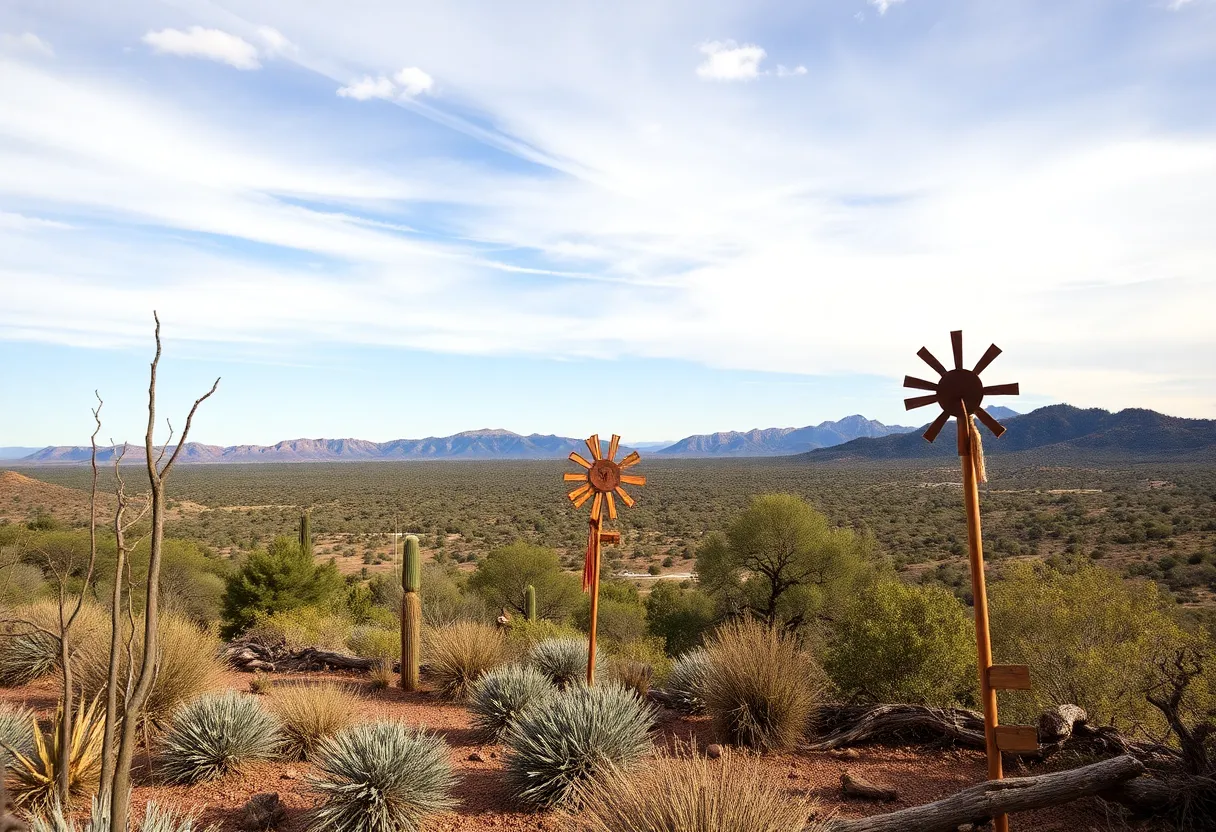

Oak Flat, a sacred site for the Apache community, contrasting the potential industrial development of the Resolution Copper mine.
The U.S. Supreme Court has denied an appeal to halt the controversial Resolution Copper mining project in Arizona, impacting sacred Apache land at Oak Flat. The ruling, which upholds past lower court decisions, highlights the conflict between economic development and Native rights. While supporters of the project cite significant economic benefits, the Apache community argues that the mine threatens their sacred sites and violates religious rights. The legal saga surrounding this issue continues as the Apache Stronghold vows to protect their cultural heritage against ongoing threats.
In a significant ruling, the U.S. Supreme Court recently denied an appeal that aimed to stop a controversial copper mining project on federal land in Arizona. This ruling came on May 27, 2025, impacting the Apache Stronghold group’s efforts to halt the Resolution Copper mine, a project that has sparked debate due to its connection to sacred land held dear by the Apache people.
At the heart of this issue is Oak Flat, nestled in the Tonto National Forest, a site cherished by the Apache tribes for its cultural and spiritual significance. Historically, Oak Flat has served as a central spot for various traditional ceremonies, making any disturbance to the land a point of contention for the Apache community. The Apache Stronghold argues that the ongoing land transfer process violates their religious rights, pointing to the potential destruction of sacred sites that they hold dear.
On the other hand, supporters of the Resolution Copper mine highlight the economic benefits the project promises. The mine is designed to extract roughly 40 billion pounds of copper over its lifespan, potentially bolstering Arizona’s economy by adding $1 billion annually. It’s expected to create thousands of jobs and breathe new life into traditional mining towns. This duality of perspectives—sacred rights versus economic growth—has fueled ongoing discussions and disagreements.
The Supreme Court’s recent decision upholds previous rulings by lower courts that allowed the land transfer to proceed. This transfer was initially authorized by Congress back in 2014, marking the beginning of a lengthy legal saga. In the closing days of the Trump administration, the U.S. Agriculture Department completed an environmental review for the project, further facilitating the path to the mine’s development. A federal appeals court had earlier ruled against the Apache Stronghold with a narrow 6-5 vote, indicating the contentious nature of the legal proceedings surrounding this project.
Interestingly, Justice Neil Gorsuch, along with Justice Clarence Thomas, dissented against the court’s decision not to hear the case, expressing that it was a “grievous mistake.” Gorsuch’s dissent underlined the potential double standards in the court’s approach, suggesting that if a similar situation involved a Christian church, the court would likely have taken the case.
Despite the setbacks, the Apache Stronghold remains resolute in their mission to protect Oak Flat. Group members, including spokesperson Wendsler Nosie Sr., have vowed to continue their fight, seeking avenues through Congress and the courts to safeguard this sacred site from destruction. The San Carlos Apache Tribe has voiced that the land transfer contradicts provisions laid out in an 1852 treaty with the U.S. government, further complicating the complexities of this case.
Adding an intriguing layer to this ongoing saga, Oak Flat is recognized as a traditional cultural property and is listed in the National Register of Historic Places. This designation reinforces its significance, not just to the Apache community but also in the broader context of cultural heritage.
The proposed mining method, known as block cave mining, raises concerns about significant land subsidence, which could create a massive crater nearly 2 miles wide and 1,100 feet deep. Environmental advocates worry about the long-term consequences of this approach, both environmentally and culturally.
With ongoing discussions and efforts to protect this sacred land, the future remains uncertain. As the mining project moves forward with the backing of the federal government, the Apache community and activists are preparing for a continued struggle to ensure that their cultural heritage is not lost forever.
News Summary Gunter, Texas is set to undergo a transformation with the groundbreaking Platinum Ranch…
News Summary The Texas House has passed Senate Bill 3, banning all THC products following…
News Summary San Antonio recently held the 2025 South Texas Summit, uniting business leaders to…
News Summary A controversial debate over hemp-derived THC products is taking place in Texas as…
News Summary Local businesses in Texas are reeling from the impact of President Trump's tariffs,…
News Summary GlobalWafers, through GlobiTech, has initiated a $5 billion investment to establish a silicon…